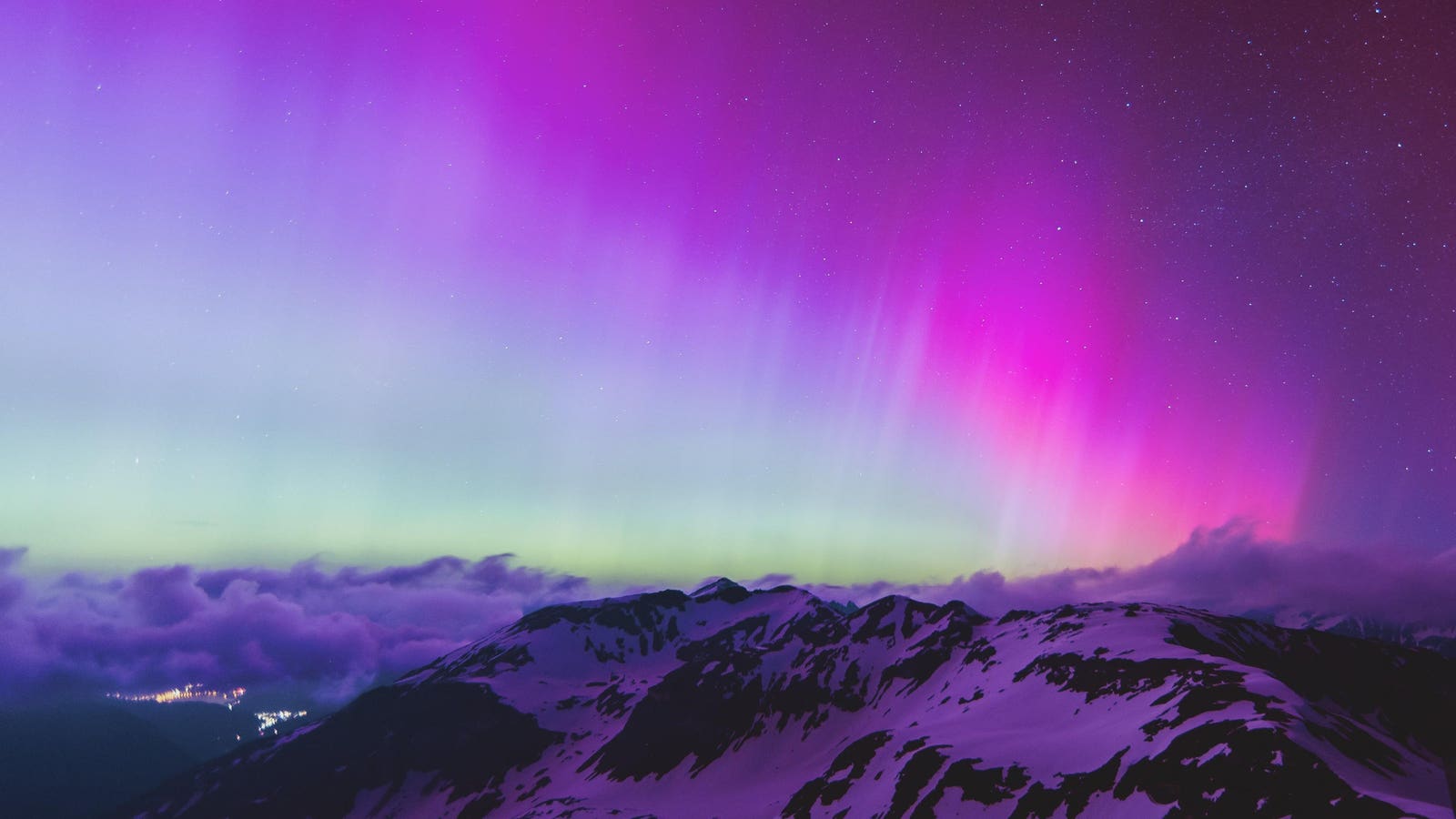
Overview
On Thursday, high-velocity solar winds are anticipated to influence Earth’s magnetic field, possibly enabling more states to witness the northern lights, as reported by the National Oceanic and Atmospheric Administration (NOAA).
Meteorologists indicate that rapid solar winds could affect the Earth’s magnetic field.
Important Information
According to NOAA, a Kp index of five on a scale from one to nine is predicted for Thursday night, indicating that the auroras will be observable farther from the North Pole, providing a “breathtaking view” for those situated in appropriate locations.
A minor geomagnetic storm—an interruption of Earth’s magnetic field—is likely on Thursday, attributed to high-velocity solar winds originating from a region on the sun’s surface, as mentioned in NOAA’s three-day outlook.
NOAA estimates that auroral activity will likely remain high through Friday night, although it is expected to diminish by Saturday.
On Sunday, NASA predicted a series of solar weather events that may affect Earth this week, including 31 minor solar flares and 27 coronal mass ejections, which are both associated with increased auroral activity.
Subscribe to Forbes Breaking News Text Alerts: We are introducing text message alerts to keep you updated with the most significant stories shaping today’s news. Text “Alerts” to (201) 335-0739 or sign up here.
Where Can You See the Northern Lights?
Alaska presents a significant opportunity for observing the northern lights, while northern areas of Washington, Idaho, Montana, North Dakota, Minnesota, and Wisconsin have a lesser chance of visibility. Regions in northeastern Wyoming, South Dakota, northern Iowa, Upper Michigan, northern New York, Vermont, New Hampshire, and Maine offer even lower prospects for witnessing this phenomenon. (Refer to viewing line below.)
Viewing line for Thursday night.
Best Viewing Practices for the Northern Lights
The aurora borealis is ideally observed between 10 p.m. and 2 a.m. local time, according to NOAA, which recommends finding a high point away from artificial light. With optimal conditions, the northern lights may be visible up to 620 miles away.
Tips for Capturing Photos of the Northern Lights
For those using standard cameras, National Geographic recommends using a wide-angle lens, setting a high ISO, and focusing on the farthest object. NOAA advises enabling night mode on smartphones, as these devices can capture images of the aurora even if it is not visible to the naked eye.
Background Information
The sun’s surface reached a “solar maximum” in October, according to NASA, indicating a continuation of heightened solar activity through early 2026. This activity includes solar flares—explosions of energy from the sun—and coronal mass ejections, which release plasma bubbles during these flares. Electrons from these occurrences interact with nitrogen and oxygen atoms and molecules in the atmosphere, producing light, as noted by NOAA. The most intense geomagnetic storm in two decades transpired in May 2024, creating the strongest displays of the northern lights in over 500 years. A similar incident occurred in October, with the northern lights appearing as far south as northern Florida and Texas.
Additional Resources









